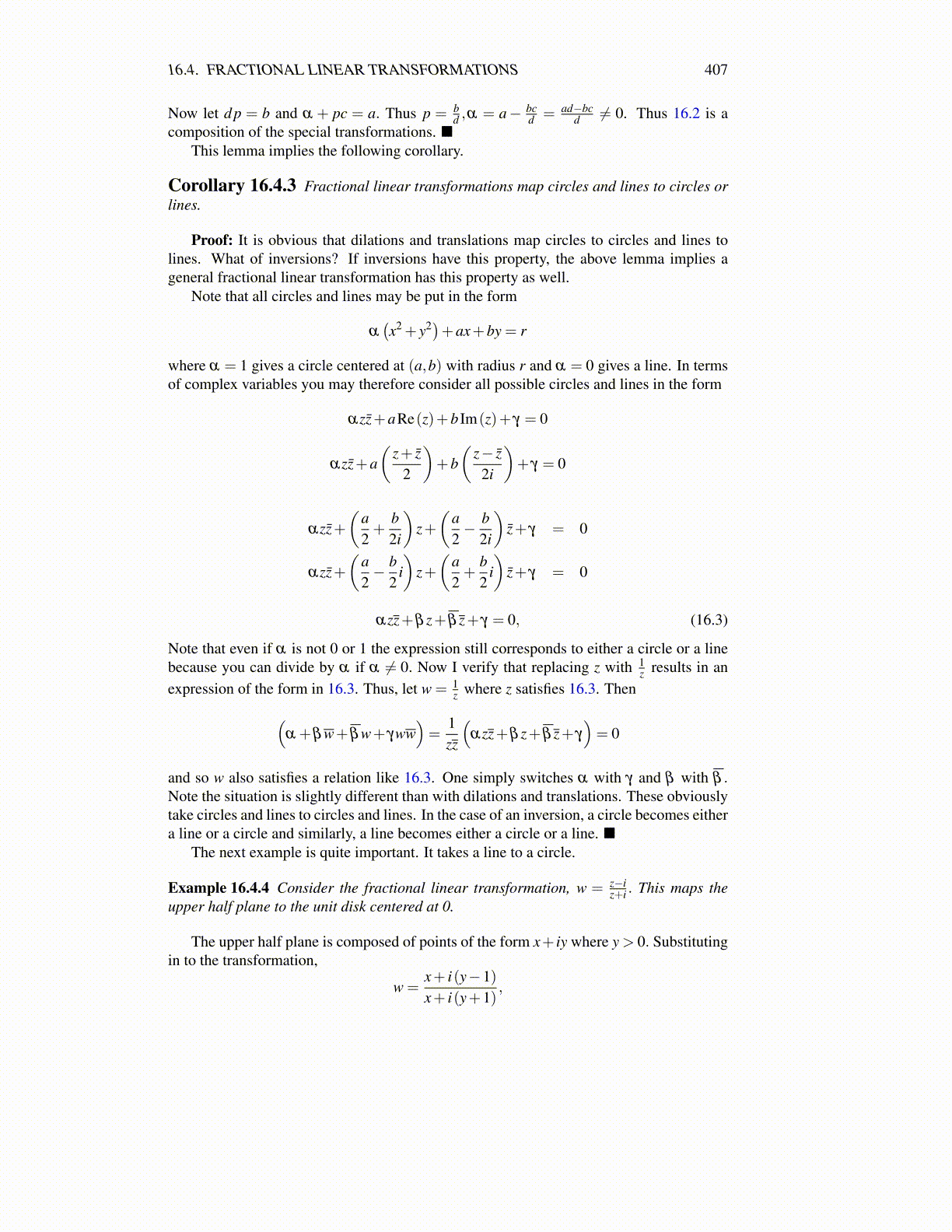
16.4. FRACTIONAL LINEAR TRANSFORMATIONS 407
Now let d p = b and α + pc = a. Thus p = bd ,α = a− bc
d = ad−bcd ̸= 0. Thus 16.2 is a
composition of the special transformations. ■This lemma implies the following corollary.
Corollary 16.4.3 Fractional linear transformations map circles and lines to circles orlines.
Proof: It is obvious that dilations and translations map circles to circles and lines tolines. What of inversions? If inversions have this property, the above lemma implies ageneral fractional linear transformation has this property as well.
Note that all circles and lines may be put in the form
α(x2 + y2)+ax+by = r
where α = 1 gives a circle centered at (a,b) with radius r and α = 0 gives a line. In termsof complex variables you may therefore consider all possible circles and lines in the form
αzz̄+aRe(z)+b Im(z)+ γ = 0
αzz̄+a(
z+ z̄2
)+b(
z− z̄2i
)+ γ = 0
αzz̄+(
a2+
b2i
)z+(
a2− b
2i
)z̄+ γ = 0
αzz̄+(
a2− b
2i)
z+(
a2+
b2
i)
z̄+ γ = 0
αzz+β z+β z+ γ = 0, (16.3)
Note that even if α is not 0 or 1 the expression still corresponds to either a circle or a linebecause you can divide by α if α ̸= 0. Now I verify that replacing z with 1
z results in anexpression of the form in 16.3. Thus, let w = 1
z where z satisfies 16.3. Then(α +βw+βw+ γww
)=
1zz
(αzz+β z+β z+ γ
)= 0
and so w also satisfies a relation like 16.3. One simply switches α with γ and β with β .Note the situation is slightly different than with dilations and translations. These obviouslytake circles and lines to circles and lines. In the case of an inversion, a circle becomes eithera line or a circle and similarly, a line becomes either a circle or a line. ■
The next example is quite important. It takes a line to a circle.
Example 16.4.4 Consider the fractional linear transformation, w = z−iz+i . This maps the
upper half plane to the unit disk centered at 0.
The upper half plane is composed of points of the form x+ iy where y > 0. Substitutingin to the transformation,
w =x+ i(y−1)x+ i(y+1)
,